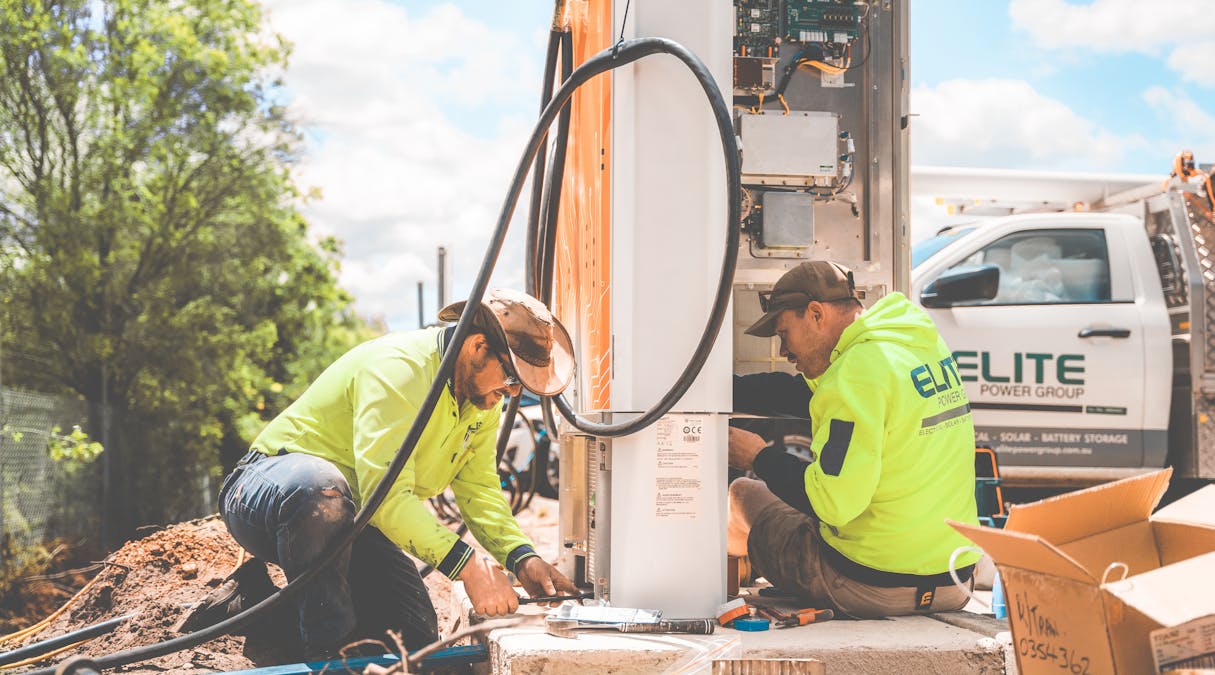Home Improvement
How Does BIM Coordination Help in Construction Projects?

Coordination of Building Information Modeling (BIM) is frequently hailed as a groundbreaking procedure in building projects, offering improved accuracy, efficiency, and collaboration. Like any technology, BIM is not without its limitations and difficulties, though. Significant problems can occur even when the goal is to improve project outcomes, especially for small to medium-sized initiatives. This essay will examine the possible drawbacks of BIM coordination in construction, emphasizing how technology can occasionally make things more difficult rather than easier.
The Cost and Complexity of Implementing BIM
It costs a lot of money to implement BIM coordination in terms of technology, software, and training. These instruments can be prohibitively expensive initially, especially for smaller construction companies. In contrast to conventional techniques such as utility modeling services, which are well-established in the industry and have lower initial costs, BIM setup demands substantial time and financial resources. Due to the high entrance hurdle, fewer small businesses may choose to use BIM, which would restrict its use and widen the gap between big and small construction enterprises.
Moreover, there must be a steep learning curve for BIM software because of its intricacy. To use BIM technologies efficiently, professionals need to go through a rigorous training program, which adds to the expense and time commitment. The perceived productivity improvements might often be offset by delays in project schedules resulting from the period of transition from traditional methods to BIM. A company’s human resources may be strained by the continuous requirement for specialized staff, which could take focus away from other important project areas.
Furthermore, it can be expensive to operate BIM systems because they need regular updates and license payments. Because of this, BIM software typically has a total cost of ownership that is much higher than the initial purchase, necessitating a long-term financial commitment that not all businesses are willing to undertake.
Integration Difficulties with Current Workflows
BIM coordination requires a fundamental shift in how construction projects are managed and executed. Traditional workflows and practices must be adapted to integrate BIM processes, which can be a daunting task. For companies with
established methods and protocols, this transition can disrupt ongoing projects and require substantial adjustments. Project management techniques frequently need to be completely redesigned in order to integrate BIM into current workflows, which could result in inefficiencies and misunderstandings throughout the transition.
For instance, businesses used to more conventional approaches could find it difficult to work together on BIM projects. In contrast to discrete tasks in traditional workflows, BIM necessitates ongoing collaboration and communication amongst multiple stakeholders. If not handled well, this collaborative method might result in misunderstandings, effort duplication, and confrontations. Furthermore, there may be technical difficulties when integrating BIM with the project management software and tools that are already in place. This may necessitate making further expenditures in new platforms that support BIM or in custom interfaces.
The transition period can also lead to resistance from employees who are comfortable with traditional methods. This resistance can slow down the adoption process and reduce the overall efficiency of the project. Additionally, projects that are mid-cycle when BIM is introduced may suffer from inconsistencies and data integration issues, further complicating the coordination process.
Issues with Data Management and Interoperability
The ability of BIM to simplify data management throughout the project lifecycle is one of its major promises. But this could also end up being one of its biggest disadvantages. BIM can produce an astounding amount of data, both in terms of volume and complexity. Maintaining accuracy and consistency in the management of this data can be challenging throughout the course of extended project durations, as it calls for strong systems and procedures.
One of the biggest challenges still facing BIM systems and tools is interoperability. various software tools may be used by various stakeholders, which can cause compatibility problems and data loss while moving information between systems. The collaborative benefits of BIM may be undermined by information silos that result from this lack of standardization.
Data discrepancies may arise, for example, if one team uses a certain BIM program for design and another for construction planning. It takes meticulous planning and preparation to make sure that everyone has access to the same data and can use it successfully. But it can be laborious and prone to mistakes.
Overuse of Technology and Its Drawbacks
Even with its advances, BIM technology is not perfect. Relying too much on BIM can put you at serious danger in the event that the technology malfunctions or the digital models have problems. Issues like data corruption, software defects, and cyber-security risks can seriously affect project budgets and schedules.
Furthermore, the accuracy of BIM models depends on the data that is entered into them. Initial data errors have the potential to affect projects at every stage and result in expensive errors and rework. Reliance on digital models may lead to the neglect of real-world, practical problems that may not be well represented in a BIM model. The disconnection between the digital and physical domains may give rise to unanticipated difficulties during building.
Furthermore, a strong dependence on technology may lessen the value placed on artisanship and conventional abilities. An overemphasis on digital procedures might obscure the human element of building, which involves experience-based decision-making and problem-solving. This can result in a workforce that is less adept at handling on-site challenges without the aid of technology.
Limited Benefits for Smaller Projects
For large, complicated projects, BIM provides clear benefits; but, its applicability for smaller projects is less evident. BIM is less useful for smaller-scale projects because of its high implementation costs, complicated data administration, and requirement for specialized staff. Traditional techniques, like 3D furniture rendering services, may be more affordable and manageable for small construction companies or residential projects.
Because they usually include fewer parties and simpler structures, smaller projects don’t often require the kind of intensive collaboration that BIM makes possible. For such projects, the marginal gains in accuracy and efficiency may not outweigh the costs associated with setting up and maintaining BIM systems. Instead, these projects may benefit more from straightforward, traditional approaches that are easier to implement and manage.
In addition, the time and energy needed to train employees and incorporate BIM into smaller projects may take away from the actual construction activity, which could result in delays and higher expenses. BIM is a less appealing option for smaller businesses and projects with tighter budgets because its return on investment is frequently lower in smaller projects.
YOU MAY ALSO LIKE: Small Changes, Big Returns: Simple Tweaks to Increase Your Home’s Value
Conclusion
Although BIM coordination has many advantages for building projects, it is not without disadvantages. Significant concerns that need to be addressed include the high implementation costs, difficulties integrating new processes with current workflows, problems with data management and interoperability, an excessive dependence on technology, the limited advantages for smaller initiatives, and the effects on the environment and society. Traditional techniques, like wood framing estimating, may be a more useful and effective strategy for many projects, especially smaller ones. Before choosing to use BIM in their projects, construction companies should carefully consider the benefits and drawbacks of the technology to be sure the strategy they choose will work for their unique requirements and available resources.
Home Improvement
Find your Affordable Ideas for a Stunning Landscaping

All dream of a beautiful yard that will add value to the homes and become an oasis in which you can relax outdoors. Landscaping will feel like an expensive project. With plants, equipment, and a helping hand from the pros, it can soon become expensive. By using a little creativity and thinking outside the box, it is doable to landscape on a budget. That is why this article gives you a list of ideas or tips for making the exterior of your house going to be comfortable and beautiful without having to spend a lot.
Plan Before You Start
When designing landscapes, planning is the first process. Sort out your yard and figure it onto a paper as well as which landscape design locations you would like design. A well-defined idea of what you want to achieve will prevent you from making purchases that are useless and keep your efforts focused. Take measurements of the space you are working with and create a materials or plant list this plan will be used as your roadmap during the process.
Use What You Have
Take note of what you have before purchasing new plants or materials. Incorporate existing trees, shrubs, or rocks into your landscaping Melbourne design. You can save a lot of money by re-using old bricks or stones to make garden borders, ads, or walkways. You may also upcycle items such as old tubs, barrels, or even tires to make original planters for flowers and vegetables.
DIY Landscaping Projects
Employing a professional landscaper also can be quite expensive, but there are many projects that you could do yourself. You can build a garden bed, lay down a simple stone path, or plant a tree with only some basic tools and time. If you are unsure where to start in the realm of gardening but want to attempt your hand at horticulture at a later time, it usually is advisable to participate in DIY style and design. DIY not only saves money but allows you to customize your yard.
Use Gravel for Pathways
Gravel is an inexpensive way to add pathways to your yard. It is far cheaper than stone or concrete and simple to lay. The gravel path offers smooth scalloped edges and deep texture, a shaded route through the landscape. You could even stone or brick out the paths to make them look neat.
Build a Simple Deck or Patio
You can landscaping Melbourne with a simple deck or patio can be a good area for outdoor dining or relaxation. Expensive materials, such as concrete pavers or even salvaged wood are not required. Because it does not have to be completed all in one go, this DIY project allows you to save up for the materials over time and will leave you with a space that is effective and great looking.
Install Solar Lighting
Outdoor lighting does not have to be overpriced. If you have a yard and want to see your way somehow, solar lights are the best value-for-money lighting you can use that also helps reduce waste. Solar lights are available in many retail outlets, some of which do not even have to be wired up at all. Line your pathways with them or set them around flower beds and patios to add a warm glow in the evening.
Vertical Gardens Add Height
Ideal for those working with limited space or hoping to get creative with how they present their plants. Plant climbing plants like vines, beans, or cucumbers for use with a trellis, fence, or wall. Living walls and vertical gardens are an inexpensive way to get a burst of green without losing the floor space. Additionally, they add more depth and color to your yard.
Gardening on a Budget doesn’t mean that satisfying with the less attractiveness and style. Budget-friendly ideas will create a beautiful and relaxing outdoor space that you can enjoy for years.
Home Improvement
Importance of Hiring Trusted Electricians

Handling electrical work is one of the most important jobs in the project, when building a new home or remodeling an existing one. To ensure that the services you obtain meet your needs and your expectations perfectly, the first step in achieving your goals is to choose reputable and experienced electricians such as electricians in Wollongong. These service providers are contractors who provide quality electrical services to meet your demands. They understand their jobs and are skilled in properly installing wires and electrical systems. Read below to learn some of the reasons why you need to hire these service providers.
- Safety
It is essential to have the best people who know how things are done and translate that into high-quality work and trusted results. Ask friends for recommended electricians who bring them satisfaction and safety. Get only licensed companies with the best customer references and positive feedback. When meeting or inviting electricians to your place, ask them questions about their practices and insurance, whether they provide guarantees, request cost estimates, and consult on any queries that concern you before engaging any employee or labor for your project.
- Ensuring Compliance with Electrical Codes
Complying with the Electrical Codes is vital because it helps avoid accidents due to electrical hazards. These codes outline the construction requirements that result in ultimate safety. Every home or commercial property owner desires to save on electricity. Utilizing the expertise of a trained, experienced electrician can assist in lessening electricity bills, increasing savings, and the value of your property. It is not only for electrical emergencies; hiring an electrician ensures that your property is well protected, saves on utility costs, and is better connected.
- Efficient Troubleshooting and repairs
A skillful and experienced individual can pinpoint those issues and address them properly. Professional electricians possess the knowledge to detect problems faster. Moreover, they will provide real solutions rather than producing temporary fixes that may cause you to spend again in no time. Electricians can ensure you are in great hands with whatever work you require involving your electrical system. Unreachable repair work can be dangerous, and hiring an electrician is a must because they ensure your safety and provide installations according to the required standards. The electrician you hire will utilize functions developed to keep your electrical system safe, such as circuit breakers and regular safety checks.
- Ensuring Insurance Coverage
Ensure that the electrician you are hiring has proper insurance for their work. There are several ways uninsured electricians might make a mess, and you do not want any responsibility. You will be held financially responsible if the electrician is hurt while working on your property and your insurance policy does not cover them. Suppose the electrician makes a mistake during installation and your property sustains damage. In that case, you want an insurance plan to ensure you are covered, and the repairs will be taken care of through that insurance policy. Before hiring any electrician, have them provide a copy of their insurance coverage so you can review it and ensure it is current and offers full protection for all eventualities.
- Reliability
Electricity is very hazardous and could prove fatal if improperly handled or installed. One must know and understand what they are doing when dealing with it. The daily rate of electrocution accidents could have been avoided had they decided to get professional help. Hiring a professional to do the work could also save the person from long hours of being without electricity or longer hours of functional electricity while the work is being done.
Always hire a legitimate and trustworthy electrician like electricians in Wollongong. Ask friends and family members for recommendations, and always check for guarantees, credentials, and insurance. The electrician you hire must have a certificate, be registered and certified in the industry, and be monitored to ensure compliance with job regulations and standards. Look for experience identifying and solving electrical problems and a reputation for quality work. Select an electrician with experience in the specific work you want to do. These are the reasons why you need an experienced electrician.
Home Improvement
Move-In and Move-Out Cleaning Checklist: Don’t Miss These Key Areas!

Moving can be a stressful experience, but one thing that can make the process smoother is ensuring that your new or old home is thoroughly cleaned. Move-in and move-out cleaning services are designed to tackle the tough tasks that often get overlooked during a busy relocation. Whether you’re preparing for new tenants or making your new house feel like home, this checklist will help you identify the key areas that need attention.
1. Kitchen Cleaning Essentials
- Cabinets and Drawers: Empty and wipe down all cabinets and drawers inside and out. Remove any crumbs or residues left behind.
- Appliances: Clean the inside of the oven, refrigerator, microwave, and dishwasher. Pay extra attention to the stove top and exhaust fans.
- Sinks and Countertops: Scrub the sink, faucets, and countertops to remove stains, limescale, and food particles.
- Floors: Sweep and mop the kitchen floor, ensuring all corners and under appliances are spotless.
2. Bathroom Deep Cleaning
- Toilets, Showers, and Bathtubs: Disinfect and scrub toilets, bathtubs, and shower stalls. Remove any mold, soap scum, and hard water stains.
- Mirrors and Glass: Clean all mirrors and glass surfaces to remove streaks and water spots.
- Tile and Grout: Pay special attention to tile and grout lines; use a grout cleaner to restore whiteness.
- Vanity and Sink: Clean and disinfect the vanity area, including the sink, faucet, and underneath the sink.
3. Living Areas and Bedrooms
- Dusting: Dust all surfaces, including shelves, baseboards, window sills, and ceiling fans.
- Windows: Clean the interior windows and wipe down the frames and tracks.
- Floors: Vacuum carpets and rugs; mop hardwood, tile, or laminate floors thoroughly.
- Closets: Wipe down closet shelves and vacuum closet floors. Make sure all personal items are removed.
4. Special Attention to High-Touch Areas
High-touch areas such as door handles, light switches, and banisters can harbor germs and dirt. Ensure these areas are disinfected to keep your new or old space healthy and clean.
5. Walls and Baseboards
Over time, walls can accumulate marks, dust, and grime. Wipe down walls where possible, especially around switch plates and corners. Don’t forget the baseboards; a quick dusting and wipe can make a big difference.
6. Final Touches
Once all the main cleaning tasks are complete, finish by taking out the trash, replacing air filters, and doing a final walkthrough to ensure everything looks perfect. This final step ensures that the home is ready for the next occupants or to welcome you into your new space.
Final Thoughts
Move-in and move-out cleaning is essential for a fresh start. By following this checklist, you can ensure no area is overlooked, making the transition smoother. For professional move-in and move-out cleaning services, consider reaching out to Cleaning Laboratory. Their expert cleaners will handle all the details, so you can focus on settling in. Learn more about their services at the link and schedule your next cleaning today.
-

 News6 months ago
News6 months agoWhat Are the Biggest Challenges in Marine Construction Projects in Australia?
-

 Fashion6 months ago
Fashion6 months agoAttractive Beach Dresses: Elevate Your Look with These Ideas
-

 Health7 months ago
Health7 months agoUnderstanding Ftmç: Gender-Affirming Surgery
-

 Pets5 months ago
Pets5 months agoPawsitively Perfect: The Types of Dog Harness Bundle for Your Furry Friend
-

 Business6 months ago
Business6 months agoHow Professional Concrete Cleaning Wins Repeat Business
-

 Entertainment5 months ago
Entertainment5 months agoNetnaija: Your One-Stop Shop for Free Movies in Africa
-

 Tech6 months ago
Tech6 months agoAiyifan: Unveiling the Genie of Technological Revolution
-

 Health6 months ago
Health6 months agoDesk Job Dilemma: Tips for Back Pain Relief




